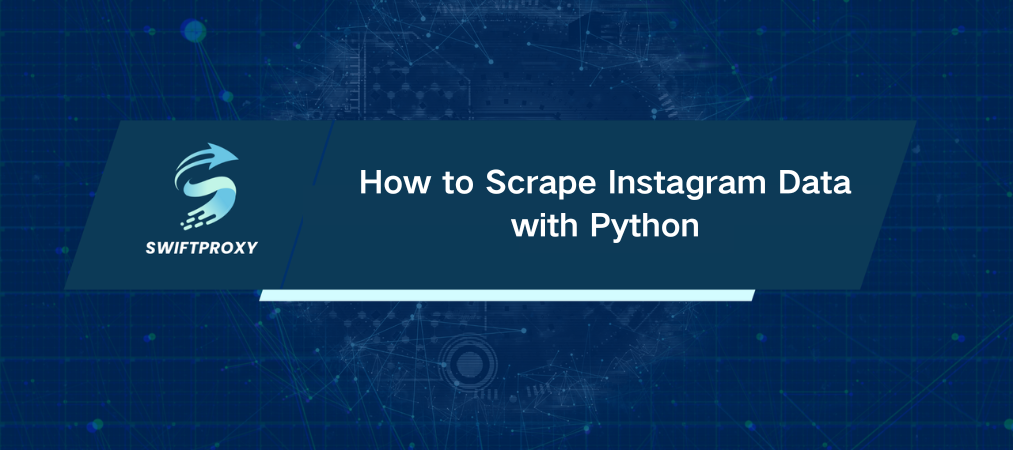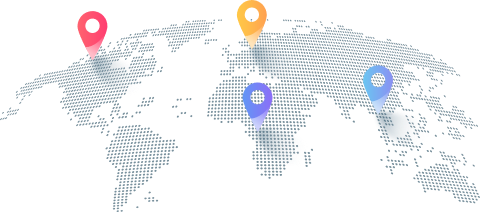How to Scrape Instagram Data with Python

Instagram is home to a massive number of users, making it a valuable source of data for many use cases. But scraping Instagram can feel like navigating a maze. Where do you start? What's allowed? And how do you avoid getting blocked?
We're here to cut through the noise. In this guide, you'll learn how to scrape Instagram profiles, posts, and comments using Python—quickly and cleanly. Whether you're working on a research project or building a data tool, these steps will get you there.
Is Scraping Instagram Legal
Instagram's rules are strict. They forbid automated access methods that mimic human behavior—like bots or scrapers that act like real users. Breaking those rules risks your IP being banned or your account locked.
However, public data is fair game. Usernames, follower counts, bios, post counts, and hashtags are all public. Private profiles? Off limits.
Scrape public data carefully. Don't flood Instagram with requests. Keep your pace steady. Too fast, and Instagram's AI will notice — blocking you faster than you can say "follow."
Step 1: Prepare Your Environment
Before digging in, set up your Python workspace. You'll need:
Python 3 installed
An IDE like VS Code or PyCharm
These Python packages: Instaloader, Pandas
Run this command in your terminal:
pip install instaloader pandas
Instaloader handles scraping. Pandas helps organize your data. Simple but powerful.
Step 2: Scrape Basic Profile Info
Start by grabbing public profile details: username, bio, followers, and post counts.
Here's a minimal example:
import instaloader
loader = instaloader.Instaloader()
profile = instaloader.Profile.from_username(loader.context, "natgeo")
print("Username:", profile.username)
print("Bio:", profile.biography)
print("Followers:", profile.followers)
print("Posts:", profile.mediacount)
You get a snapshot of any public Instagram account in seconds.
Step 3: Collect Followers List
Want to see who's following a profile? You can grab the follower usernames — but only if the profile is public and you're logged in.
Example:
followers = profile.get_followers()
for follower in followers:
print(follower.username)
Be cautious. Instagram limits how often you can request follower data. Pause between requests. Use proxies to avoid detection.
Step 4: Extract Comments from Posts
Comments reveal valuable insights. Here's how to scrape them from a user's posts:
import instaloader
L = instaloader.Instaloader()
# Login is required to access comments
L.login('your_username', 'your_password')
profile = instaloader.Profile.from_username(L.context, 'target_username')
for post in profile.get_posts():
print("Post:", post.shortcode)
for comment in post.get_comments():
print(f"Comment by {comment.owner.username}: {comment.text}")
Start small. Scrape a handful of posts first. Then scale up as you refine your approach.
Step 5: Save Your Data
Scraping is useless if you don't save the data. You have three main options:
Save to CSV with Pandas:
import pandas as pd
data = {
"Username": [profile.username],
"Bio": [profile.biography],
"Followers": [profile.followers],
"Posts": [profile.mediacount]
}
df = pd.DataFrame(data)
df.to_csv("profile_data.csv", index=False)
Save to JSON:
import json
with open("profile_data.json", "w") as f:
json.dump(data, f)
Use a Database:
If you're collecting lots of data, set up a database like SQLite or PostgreSQL to handle large volumes efficiently.
Final Thoughts
You're now equipped to scrape Instagram data responsibly by following a few key principles. Stick to public data, avoid sending requests too quickly, use proxies to protect your identity, and store data in a careful and organized way. Scraping Instagram isn't just about writing code—it's also about respecting the platform, its users, and the rules. With the right approach, you can gather meaningful data without causing disruptions.
關於作者

Instagram is home to a massive number of users, making it a valuable source of data for many use cases. But scraping Instagram can feel like navigating a maze. Where do you start? What's allowed? And how do you avoid getting blocked?
We're here to cut through the noise. In this guide, you'll learn how to scrape Instagram profiles, posts, and comments using Python—quickly and cleanly. Whether you're working on a research project or building a data tool, these steps will get you there.
Is Scraping Instagram Legal
Instagram's rules are strict. They forbid automated access methods that mimic human behavior—like bots or scrapers that act like real users. Breaking those rules risks your IP being banned or your account locked.
However, public data is fair game. Usernames, follower counts, bios, post counts, and hashtags are all public. Private profiles? Off limits.
Scrape public data carefully. Don't flood Instagram with requests. Keep your pace steady. Too fast, and Instagram's AI will notice — blocking you faster than you can say "follow."
Step 1: Prepare Your Environment
Before digging in, set up your Python workspace. You'll need:
Python 3 installed
An IDE like VS Code or PyCharm
These Python packages: Instaloader, Pandas
Run this command in your terminal:
pip install instaloader pandas
Instaloader handles scraping. Pandas helps organize your data. Simple but powerful.
Step 2: Scrape Basic Profile Info
Start by grabbing public profile details: username, bio, followers, and post counts.
Here's a minimal example:
import instaloader
loader = instaloader.Instaloader()
profile = instaloader.Profile.from_username(loader.context, "natgeo")
print("Username:", profile.username)
print("Bio:", profile.biography)
print("Followers:", profile.followers)
print("Posts:", profile.mediacount)
You get a snapshot of any public Instagram account in seconds.
Step 3: Collect Followers List
Want to see who's following a profile? You can grab the follower usernames — but only if the profile is public and you're logged in.
Example:
followers = profile.get_followers()
for follower in followers:
print(follower.username)
Be cautious. Instagram limits how often you can request follower data. Pause between requests. Use proxies to avoid detection.
Step 4: Extract Comments from Posts
Comments reveal valuable insights. Here's how to scrape them from a user's posts:
import instaloader
L = instaloader.Instaloader()
# Login is required to access comments
L.login('your_username', 'your_password')
profile = instaloader.Profile.from_username(L.context, 'target_username')
for post in profile.get_posts():
print("Post:", post.shortcode)
for comment in post.get_comments():
print(f"Comment by {comment.owner.username}: {comment.text}")
Start small. Scrape a handful of posts first. Then scale up as you refine your approach.
Step 5: Save Your Data
Scraping is useless if you don't save the data. You have three main options:
Save to CSV with Pandas:
import pandas as pd
data = {
"Username": [profile.username],
"Bio": [profile.biography],
"Followers": [profile.followers],
"Posts": [profile.mediacount]
}
df = pd.DataFrame(data)
df.to_csv("profile_data.csv", index=False)
Save to JSON:
import json
with open("profile_data.json", "w") as f:
json.dump(data, f)
Use a Database:
If you're collecting lots of data, set up a database like SQLite or PostgreSQL to handle large volumes efficiently.
Final Thoughts
You're now equipped to scrape Instagram data responsibly by following a few key principles. Stick to public data, avoid sending requests too quickly, use proxies to protect your identity, and store data in a careful and organized way. Scraping Instagram isn't just about writing code—it's also about respecting the platform, its users, and the rules. With the right approach, you can gather meaningful data without causing disruptions.


















































